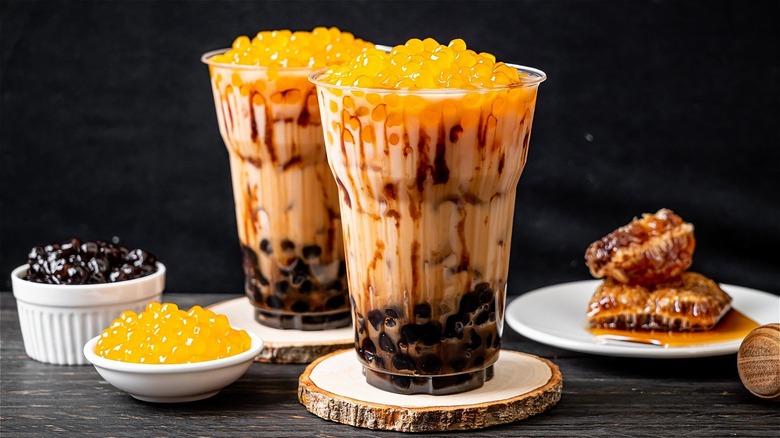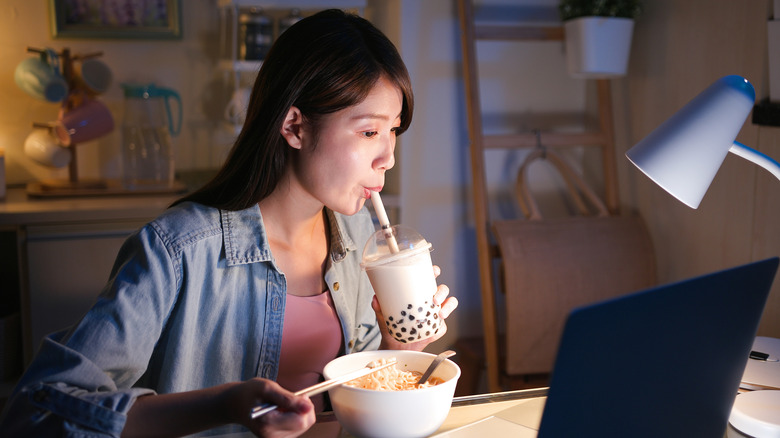Bubble Tea Isn't As Old As You Think
Cristiano Ronaldo is older than bubble tea, Eddie Huang is older than bubble tea, and, depending on whose side of the story you buy, even Lady Gaga might be older than bubble tea.
But first things first, what do we even mean by bubble tea? This part-drink, part-dessert has exploded out of Taiwan and taken the world by storm in recent years, even getting its own emoji in 2020. According to Research and Markets, the bubble tea market is soaring in the U.S., with compounded annual growth projected at 15.81% for the next five years. The key ingredients in this delicious, customizable drink are tea, ice, milk, and those iconic chewy little bites, known either as "pearls" or "boba."
Boba was originally plain black or white tapioca pearls, though now they can be jellies of myriad flavors and colors thanks to the social media-fuelled proliferation of bubble tea variations around the world. Bubble tea is a competitive business, and while that's led to a Chinese market worth of approximately $20 billion (via Momentum Works), it's also led to plenty of controversy around who exactly invented bubble tea — and when exactly it happened.
So when was bubble tea actually invented?
In the late 80s, Taiwan was the foremost place in Asia to get a cup of ice-cooled milk tea. As CNN Travel explains, the novel technique of chilling tea in cocktail shakers had been pioneered there as early as 1949. This is the original "bubble tea," named after the foam that rises to the top after shaking, rather than after the tapioca balls. But it was the addition of those signature pearls that gave bubble tea its unique texture and sparked the craze that's still going on today.
Two different people claim to be the originator of these orbs. The earlier 1986 story goes to tea shop owner Tu Tsung-ho, who was traversing the market in Tainan when he decided to buy some white tapioca balls and add them to his milk tea — their pale color is the origin of the term "pearls" for boba (via Taipei Times). Later he added the bigger, black tapioca balls, though the size was an issue. "We had to work with a plastic factory to customize straws just for our tea," Tu told CNN Travel. However, the South China Morning Post claims that bubble tea was invented during a 1987 staff innovation contest at the Chen Shui Tang teahouse in Taichung. Store manager Lin Hsiu-hui loved tapioca balls in her desserts, so she tried them out in her tea. The two shops sued each other, CNN Travel reports, but the court decided that because just about anyone can make bubble tea, who made it first shouldn't matter.

